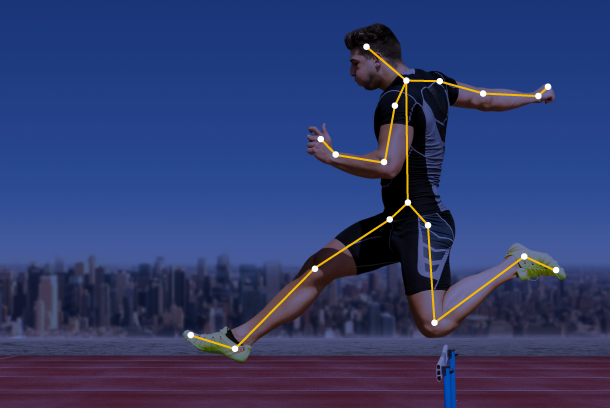The Golden State Warriors: Pioneering Physical AI
The Golden State Warriors aren’t just champions on the court—they’re leading the charge in sports AI innovation. At the 2025 NBA All-Star Tech Summit, the Warriors made headlines by introducing something that sounds straight out of science fiction: Physical AI.
At the 2025 NBA All-Star Tech Summit, they introduced Physical AI—a suite of four specialized robots designed to enhance training, strategy, and player recovery. From AI-powered defenders to automated play simulations, this technology could reshape the game.
Imagine robot defenders that can simulate any opponent’s playing style, allowing players to practice against LeBron James’ moves or Giannis Antetokounmpo’s drives without them actually being there. This isn’t just cool tech—it’s competitive advantage in silicon and steel.
But the Warriors’ AI journey goes beyond robots. The Golden State Warriors are using AI to track player movements on the court in order to optimize rest and practice times. Every step, every jump, every pivot is analyzed to ensure players peak at the right moments and avoid injury.
The team has also revolutionized fan experience. The Golden State Warriors leverage AI-powered virtual reality to enhance fan engagement. Fans can experience games from multiple angles, receiving real-time stats and immersive visuals, making the experience highly interactive and use AI to craft immersive virtual reality experiences for their fans.
The Analytics Arms Race: Catapult Sports and Second Spectrum
Professional sports teams are locked in an analytics arms race, and AI is their weapon of choice. A couple of great examples of AI in action are Catapult Sports and Second Spectrum. These tools give teams real-time performance data, injury insights, and tactical analysis, helping coaches and analysts make data-driven decisions to improve player outcomes and strategies.
Second Spectrum has become the NBA’s secret weapon. More than half of NBA teams use to track and visualize plays like Steph Curry’s 3s and LeBron James’ creativity. The system doesn’t just track where players are—it predicts where they’ll be, analyzing movement patterns to reveal tactical insights invisible to the human eye.
Catapult Sports takes a different approach, focusing on the physical demands of the game. Their wearable sensors track everything from heart rate variability to explosive movements, helping coaches understand when players are hitting their limits before fatigue leads to injury or poor performance.
The Injury Prevention Game-Changer
Perhaps the most impactful application of AI in sports is injury prevention. Traditional approaches to managing player health were reactive—treat injuries after they occur. AI has flipped this model entirely.
Machine learning algorithms now analyze biomechanical data, training loads, sleep patterns, and even social media activity to predict injury risk before problems arise. Teams can adjust training intensity, modify playing time, or implement preventive treatments based on AI recommendations.
This isn’t just about keeping star players healthy—it’s about protecting athletes’ long-term careers and wellbeing. For professional sports organizations investing millions in player contracts, AI-driven injury prevention represents both a competitive advantage and a financial imperative.
The Fan Experience Revolution
AI isn’t just changing how games are played—it’s transforming how fans experience them. Smart stadiums use AI to:
- Personalize concession recommendations based on past purchases and preferences
- Optimize parking and traffic flow using predictive algorithms
- Enhance security through facial recognition and crowd behavior analysis
- Create immersive AR/VR experiences that put fans virtually on the field
Looking Ahead: The Future of AI in Sports
As we move deeper into 2025, the integration of AI in sports will only accelerate. We’re approaching a future where:
- Virtual coaches provide real-time tactical advice during games
- AI referees make split-second decisions with superhuman accuracy
- Predictive analytics determine optimal game strategies before teams even take the field
- Personalized training programs adapt in real-time based on biometric feedback
The Human Element Remains
Despite all this technological advancement, one thing remains unchanged: sports are fundamentally about human achievement, emotion, and competition. AI doesn’t replace the thrill of a last-second shot, the strategy of a brilliant coach, or the determination of an athlete pushing beyond their limits.
Instead, AI amplifies these human elements. It gives coaches better tools to develop strategy, helps athletes reach their peak potential, and creates more engaging experiences for fans. The technology serves the human drama that makes sports compelling.
Conclusion: Game, Set, Algorithm
The AI revolution in sports is no longer coming—it’s here. From the Warriors’ robot training partners to predictive injury prevention systems, artificial intelligence is reshaping every aspect of professional athletics.
Teams that embrace these technologies aren’t just gaining a competitive edge—they’re defining the future of their sports. As AI continues to evolve, we can expect even more dramatic changes in how games are played, coached, and experienced.
The question isn’t whether AI will transform sports—it already has. The question is which teams, leagues, and athletes will best harness this technology to achieve greatness. In 2025, the smartest algorithms might just win the championship.


